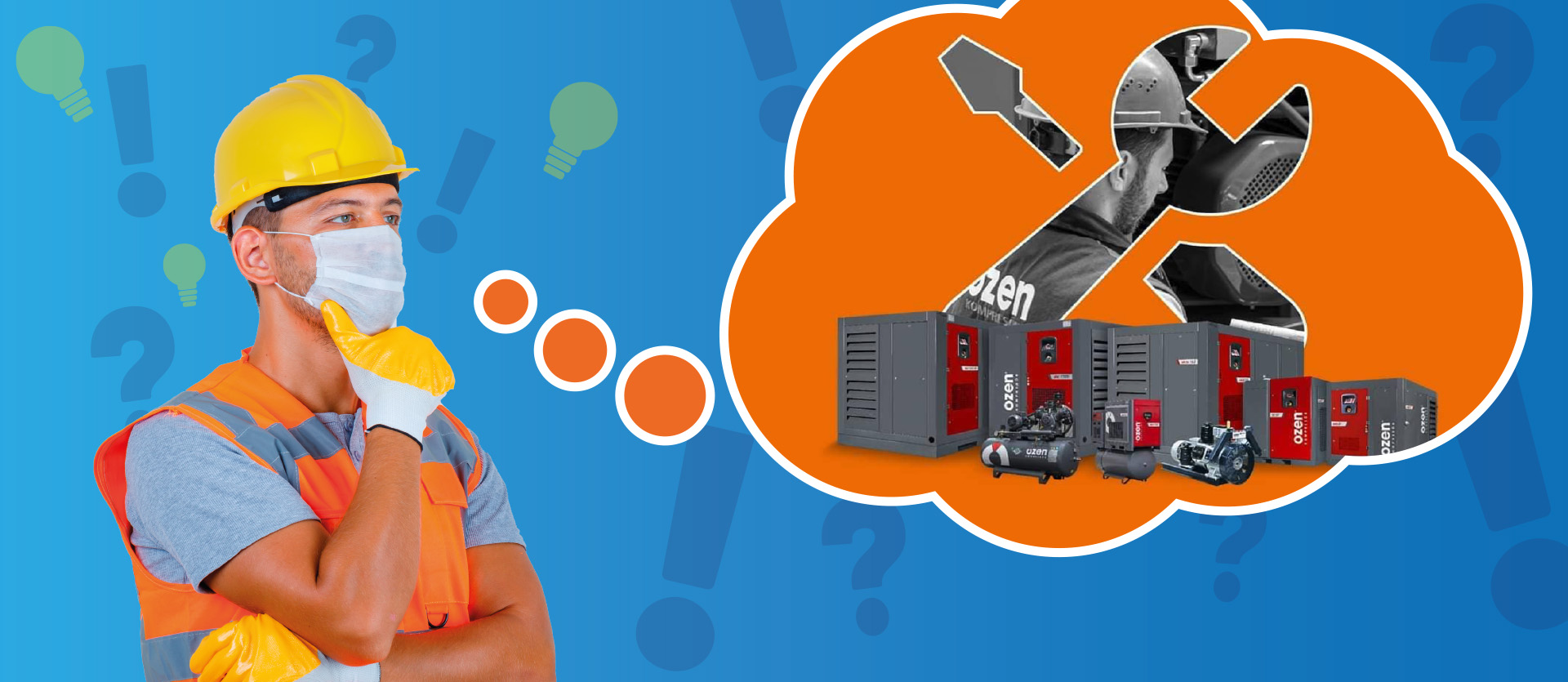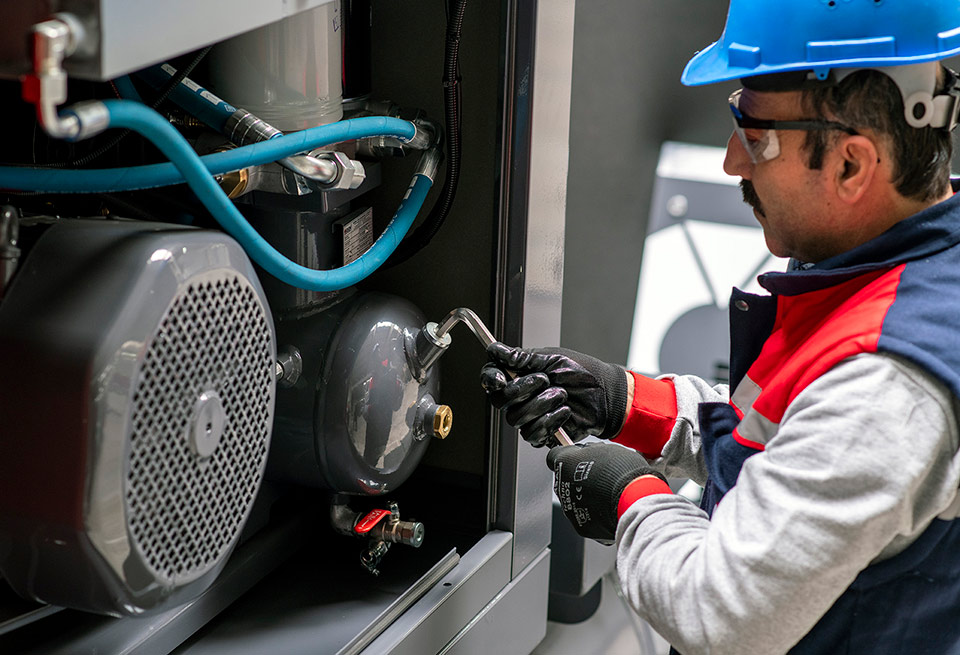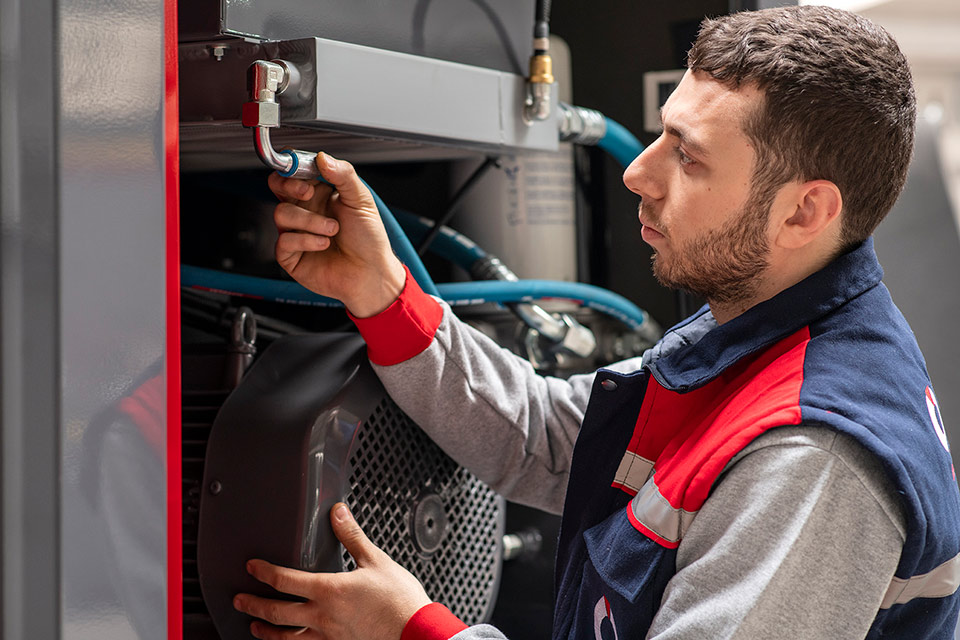Most Common Compressor Problems and Solutions
27 January 2023, Friday

In this article, where we will provide a lot of information about air compressor malfunctions and solutions, we will also talk about malfunction detection and the precautions you can take against malfunctions.
What are Compressor Malfunctions?
It is very important to be able to detect faults correctly when using a compressor. It will be easier to get service support in the event of a malfunction you have detected, and also to understand whether there is something you can do. Compressor malfunctions are divided into two groups. These are internal malfunctions and external malfunctions. External malfunctions are easier to detect. Malfunctions caused by the compressor elements on the outside are called external malfunctions. Internal malfunctions are the malfunctions in the operating system of the compressor. These malfunctions are more difficult to detect compared to external malfunctions. The reason for this is that there are no visible malfunctions.
External Malfunctions
Slipping or breaking of the compressor belt. A small slip in the compressor belt will cause problems in the operation of the compressor. If the compressor belt has slipped completely and is out of place, then it will not work properly. In this case, the belt must be snapped into place. However, the compressor must not be connected to electricity and must not be operated during this process. If you cannot snap the belt of the compressor into place by your own means, at this point, it would be right to contact the compressor service and get support. If you have snapped the belt in place and it is operating smoothly, you should carefully check the belt and belt elements. It is important to examine in detail whether there are any malfunctions in the belt and belt elements and what is the cause for slipping of the belt. Another problem related to the belt is the breaking of the belt. Belts wear out over time and break if not observed. You should never merge the belt if there is breakage. The broken belt should be replaced with a new one.
Another external compressor malfunction is the inoperation of the compressor. If you observe that the compressor is not working, first of all, it is necessary to check the electricity transmission to the compressor. You should check everything from the electricity supply to conductive wires and compressor entry wires. If there is no problem with the electricity transmitted to the compressor, you should provide a solution for this. However, if you are experiencing a compressor problem which is not related to electricity, there may be a problem which you cannot solve. In these cases, you should contact the compressor service and state that your compressor is not working due to a cause other than electricity.
Another external malfunction is air leakage. Air leakage can be easily detected by noise and by hand, and you should find out the source of this air leakage. If there is an air leakage in the hose you use on the compressor, replacing this hose will solve the whole problem. However, if the air leakage is on the hose connection point, it indicates that you should ensure good insulation on this point. If the air leakage is not at these points but directly in the compressor tank, it would be a good idea to call the compressor service.


Internal Malfunctions
Internal malfunctions may be related to problems caused by the parts involved in the operation of the electrical system or the compressor system. The fact that internal malfunctions are difficult to detect does not mean that you cannot detect them.
Loosening of the piston rod and crankshaft connection over time causes abnormal operating conditions in the compressor. The piston rod moves up and down continuously. This movement causes loosening of the bolts over time. Bolt loosening causes abnormal noise. In this case, the problem will be solved when the loosened bolt is tightened with compressor service support.
Rising of the oil temperature is a condition related to internal compressor malfunctions. As a result of the clogging in the inner pipes of the compressor, the compressor operation becomes difficult and therefore causes the oil temperature to rise. In this case, you can contact the compressor service and request that the hoses be checked and if there is any clogging, it should be removed.
If you are encountering a low oil pressure, then you should check the phases. Reverse connection of the phases reverses the electric motor, causing the oil pressure to drop. If the phase wires are correctly connected, then the oil pressure gauge or the oil pump may be faulty. In these cases, you need to get support from a professional team.
If you are experiencing a malfunction such as oil shortage in the compressor in a short time, then there may be a malfunction in the oil separator. The oil separator separates the oil in the compressor and allows the oil to return to the compressor. However, if there is a malfunction, the oil does not return to the compressor and is discharged. In this case, replacement of the oil separator eliminates the compressor malfunction.
How to Identify Compressor Malfunctions?
It is important to detect the malfunction in the early period in order to incur less costs. You can detect malfunctions yourself early with the help of the items below.
- - If your compressor is running much louder than normal, this may be caused by both an external malfunction and an internal malfunction. You can check the external elements such as fans and belts.
- - If the compressor air quality has decreased, this is a sign of a malfunction in the filters or oil system. A malfunction here will directly affect the air quality.
- - Overheating of the compressor is a sign of malfunction. If the compressor is overheating, you should first make sure that the oil is returning to the compressor properly. Afterwards, you should correctly position the compressor. If no problems are observed in these elements, you should contact the compressor service.
- - Rocking operation of the compressor. Rocking operation of the compressor is generally the indicator of internal element problems. However, in some cases, the problems in the belt and legs also cause the rocking operation of the compressor.
What Are the Causes of Compressor Malfunctions?
One of the main reasons for compressor malfunction is incomplete maintenance. Regular compressor maintenance greatly reduces the possibility of malfunctions. Even if you do not use the compressor regularly, you should have regular annual maintenance performed. Another reason for compressor failure is incorrect positioning. Correct positioning is very important for compressor health. It is important to position the compressor in a cool, large area, while keeping it free of dust.
